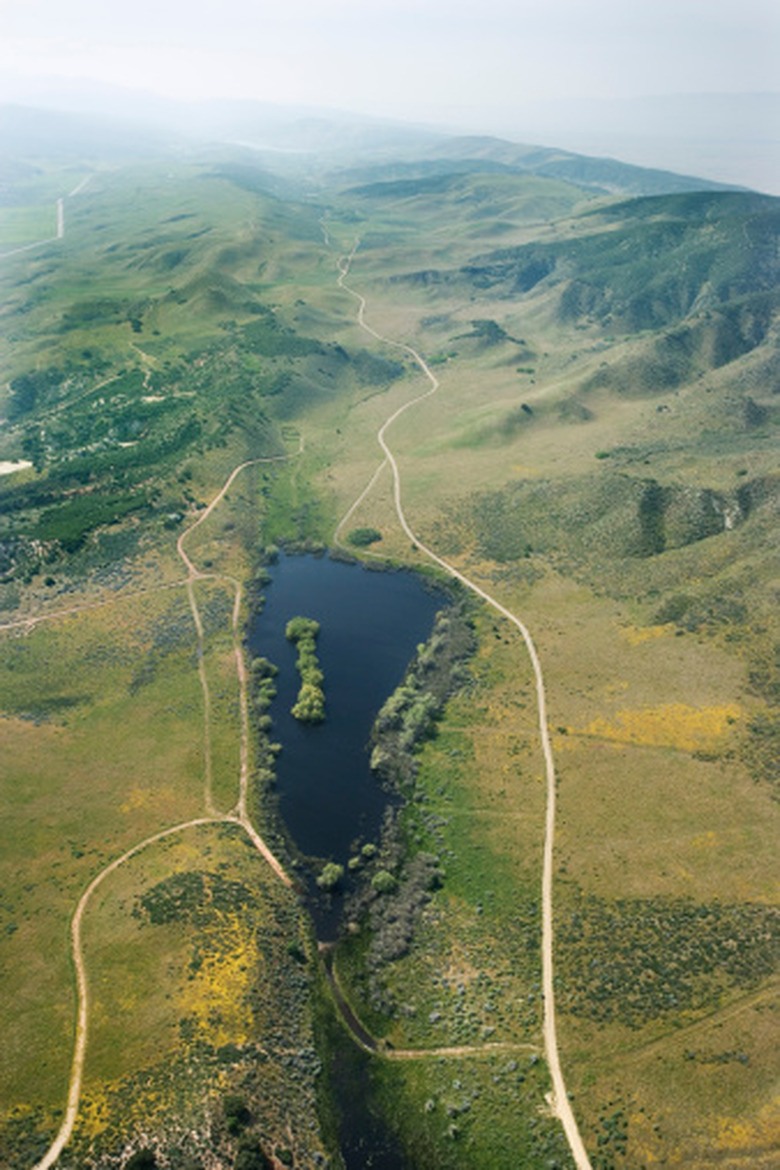What Drives The Process Of Plate Tectonics?
Our understanding of the process of plate tectonics has evolved over hundreds of years of study. A theory that explains how the sea floor spreads and how continents drift, plate tectonics is supported by evidence from the fossil record and mountain chains that originated millions of years ago on the same supercontinent. The movement of tectonic plates is driven by convection currents in the Earth's mantle, which are cycles of molten rock that flow due to changes in temperatures.
The Theory of Plate Tectonics
The Theory of Plate Tectonics
Alfred Wegener is known as the father of plate tectonics. Observing that the continents fit together like puzzle pieces, he proposed the concept of continental drift in the early 1900s. His hypothesis was originally rejected as pseudoscience, but it came into favor decades later when geologists discovered new evidence to support Wegener's ideas.
One weakness in Wegener's concept of plate tectonics and continental drift was his explanation for the mechanism driving these processes. Wegener proposed that the continents moved by sliding over the ocean floor, which we now know is incorrect. However, Wegener's ideas about the existence of a supercontinent that existed millions of years ago, along with geological evidence that supported the hypothesis that the continents separated and drifted away from each other, form the basis of our current plate tectonic theory.
With advanced instrumentation and new information about magnetism and sea-floor spreading, scientists refined Wegener's ideas many years after his death. Today, we have a comprehensive explanation for what tectonic plates are composed of, where their boundaries are and how they move.
The Process of Plate Tectonics
The Process of Plate Tectonics
Tectonic plates are composed of lithosphere, which is the Earth's crust and the uppermost part of the mantle. The crust is the earth's surface, its outermost layer, like its shell. The mantle is the layer between the Earth's crust and core, made up of semi-solid silicate rock.
Floating on the lower mantle of the earth, tectonic plates move a few inches a year. These movements create shifts in the locations of the continents and oceans, as continental and oceanic crust moves with the plates.
Driven by convection currents in the Earth's mantle, movements of tectonic plates are affected by differences in the temperatures and densities of the plates that are meeting. A place where two tectonic plates meet is called a plate boundary.
There are three different types of plate boundaries, and features created at the surface of the earth correspond to the way the plates meet. The three types of plate boundaries are convergent, divergent and transform. At a convergent boundary, two plates are moving toward each other. Plates move away from each other at divergent boundaries, and two plates are sliding past each other at transform boundaries.
Patterns of Plate Movement
Patterns of Plate Movement
Geologists have been able to determine the boundaries of tectonic plates based on observations on land and underwater. We know now that volcanoes and earthquakes are associated with the movement of tectonic plates, and study of mountain ranges and mid-ocean ridges underwater has contributed to our understanding of the process of plate tectonics.
At divergent boundaries, where tectonic plates move away from each other, molten rock from the Earth's mantle moves upward to create new material like oceanic ridges. At transform boundaries, where two plates are sliding past east other, earthquakes and fault lines are created.
At convergent boundaries, the results of the tectonic plates meeting depends on whether they are oceanic or continental plates. When two oceanic plates meet, the process of subduction occurs. Essentially, at an oceanic-oceanic plate boundary, the cooler plate sinks below the warmer plate, melting into the mantle, which is called subduction.
Results of Plate Movement
Results of Plate Movement
When an oceanic plate meets a continental plate, the differences in temperature and density cause the oceanic plate to sink below the continental plate. At a continental-continental boundary, the collision of tectonic plates results in the formation of a mountain range.
Because plate tectonics is driven by heat differences, geological features like volcanoes and hot spots also occur along plate boundaries due to magma pushed upward the convection currents created through the process of subduction.
Cite This Article
MLA
Sloane, Christina. "What Drives The Process Of Plate Tectonics?" sciencing.com, https://www.sciencing.com/drives-process-plate-tectonics-8736503/. 20 October 2021.
APA
Sloane, Christina. (2021, October 20). What Drives The Process Of Plate Tectonics?. sciencing.com. Retrieved from https://www.sciencing.com/drives-process-plate-tectonics-8736503/
Chicago
Sloane, Christina. What Drives The Process Of Plate Tectonics? last modified August 30, 2022. https://www.sciencing.com/drives-process-plate-tectonics-8736503/
